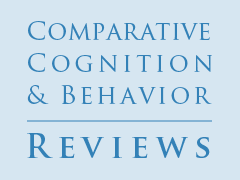Understanding how Pictures are Seen is Important for Comparative Visual Cognition
by Marcia L. Spetch,
University of Alberta
Reading Options:
Download/Read PDF | Add to Endnote
Abstract
A few of the interesting points discussed in the commentators were addressed. One commentator pointed out that a lack of perceived correspondence between pictures and objects might arise from a species’ cognitive limitations. Only by using appropriate stimulus displays can one reveal both abilities and their limitations. A second commentator discussed evidence from the neuropsychological literature and emphasized a distinction between the extraction of two-dimensional and three-dimensional information in pictures. Additional literature was discussed to support the argument that information in pictures may be perceived in multiple ways. A framework for determining under what circumstances animals perceive correspondence between picture processing and object recognition is much needed in comparative cognitive research.
Keywords: real world objects, pictures as surrogates, picture processing, birds, pigeons, artificial stimuli, visual cognition, comparative cognition
Spetch, M. L. (2010). Understanding how pictures are seen is important for comparative visual cognition. Comparative Cognition & Behavior Reviews, 5, 163-166. Retrieved from http://comparative-cognition-and-behavior-reviews.org/ doi:10.3819/ccbr.2010.50013
